





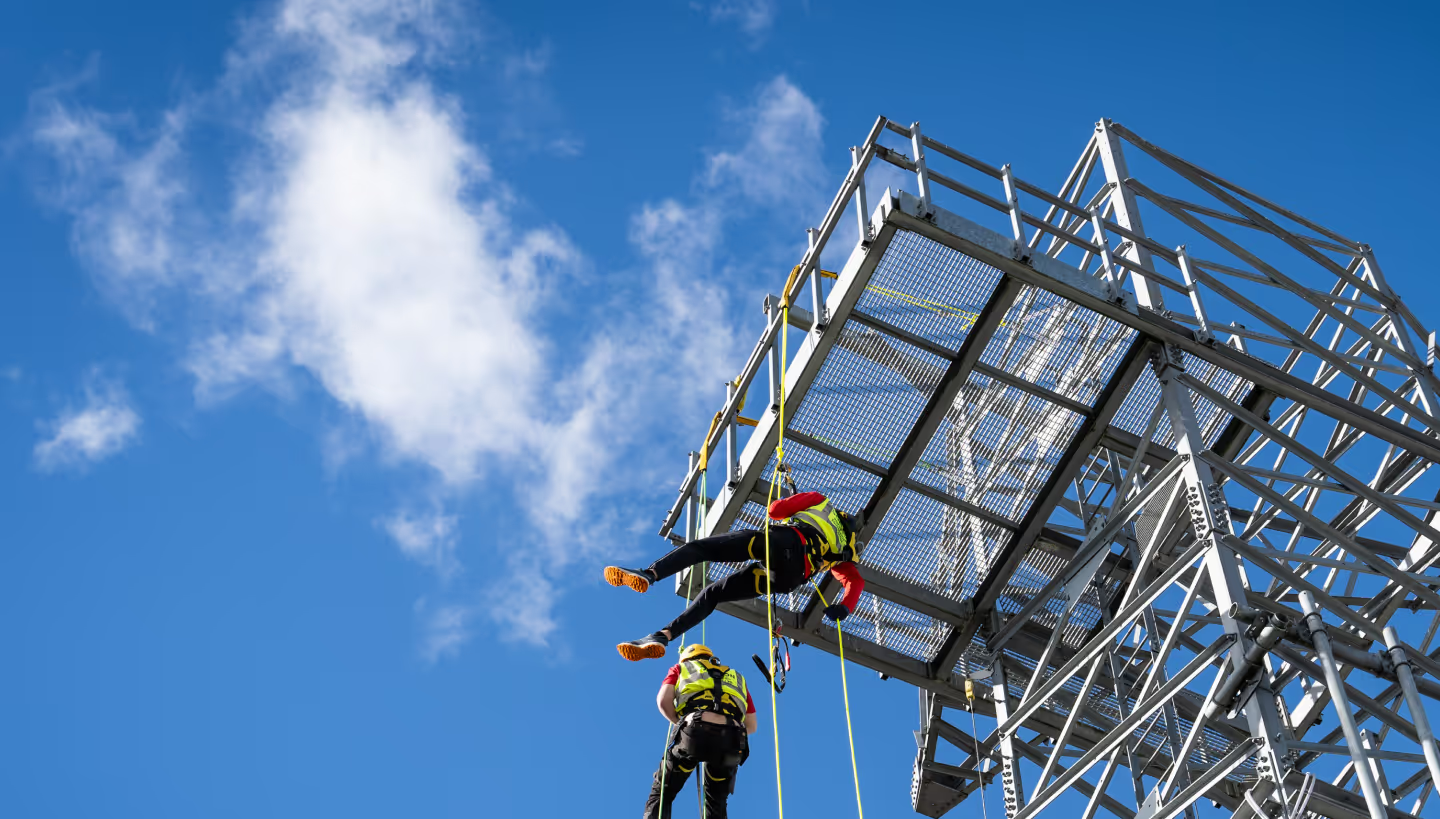
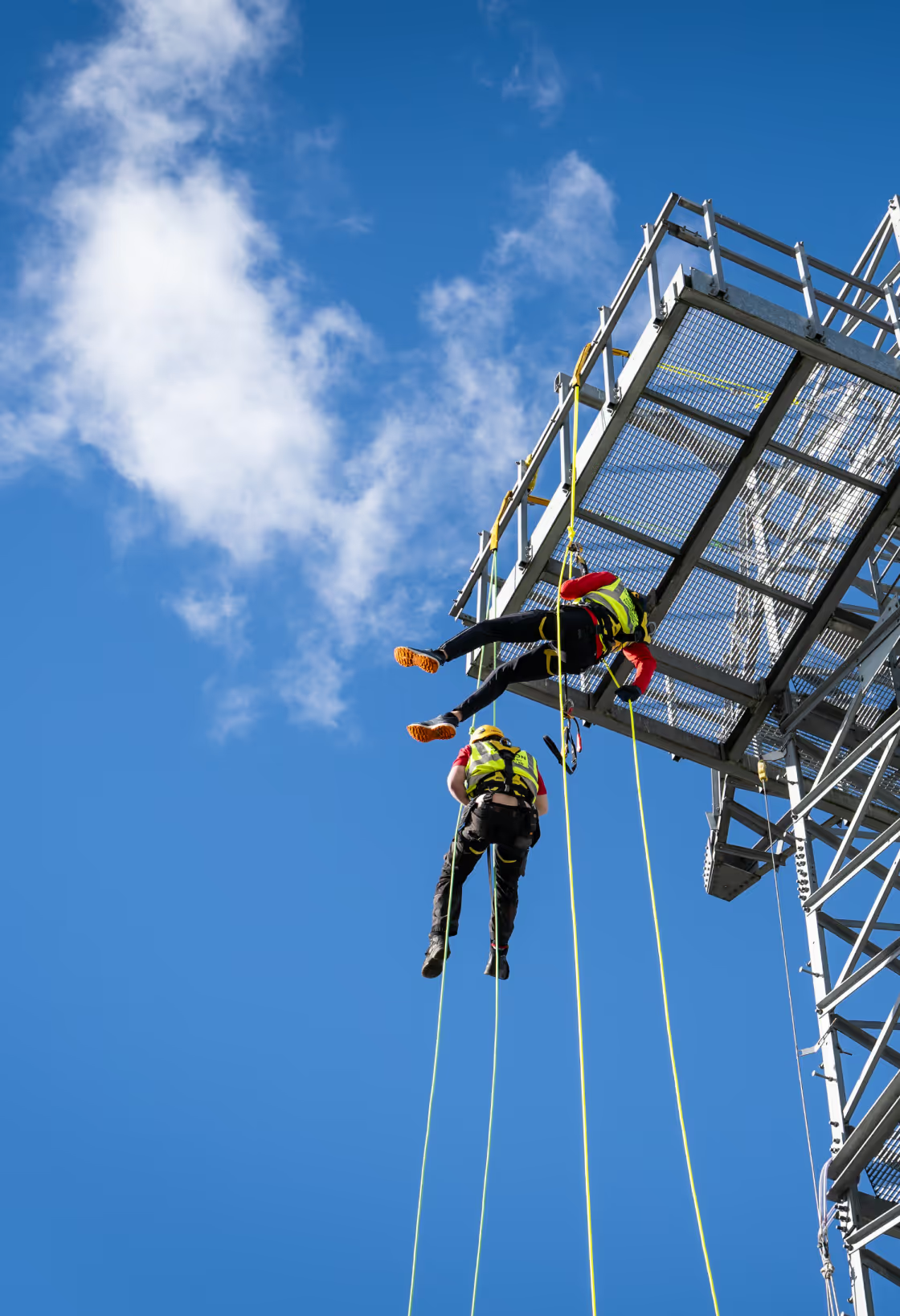

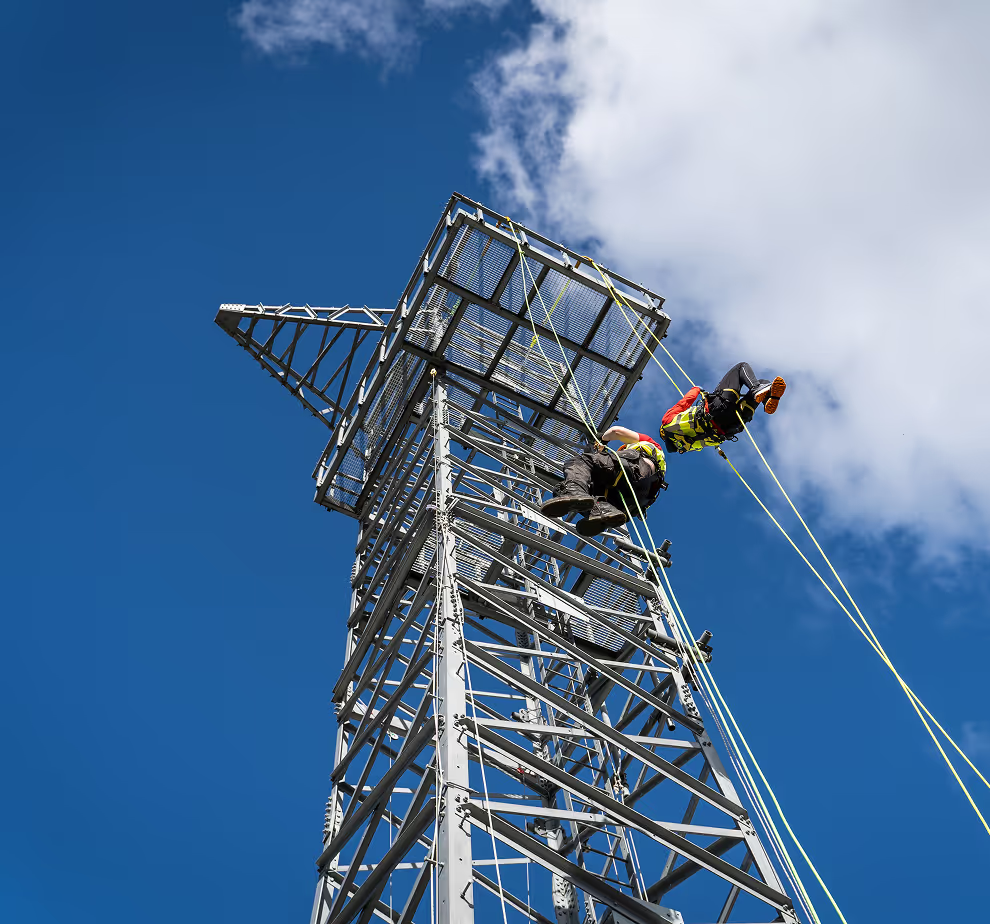
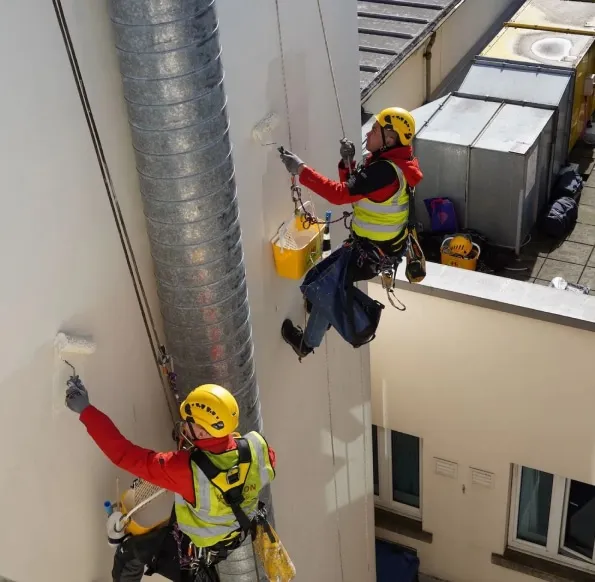
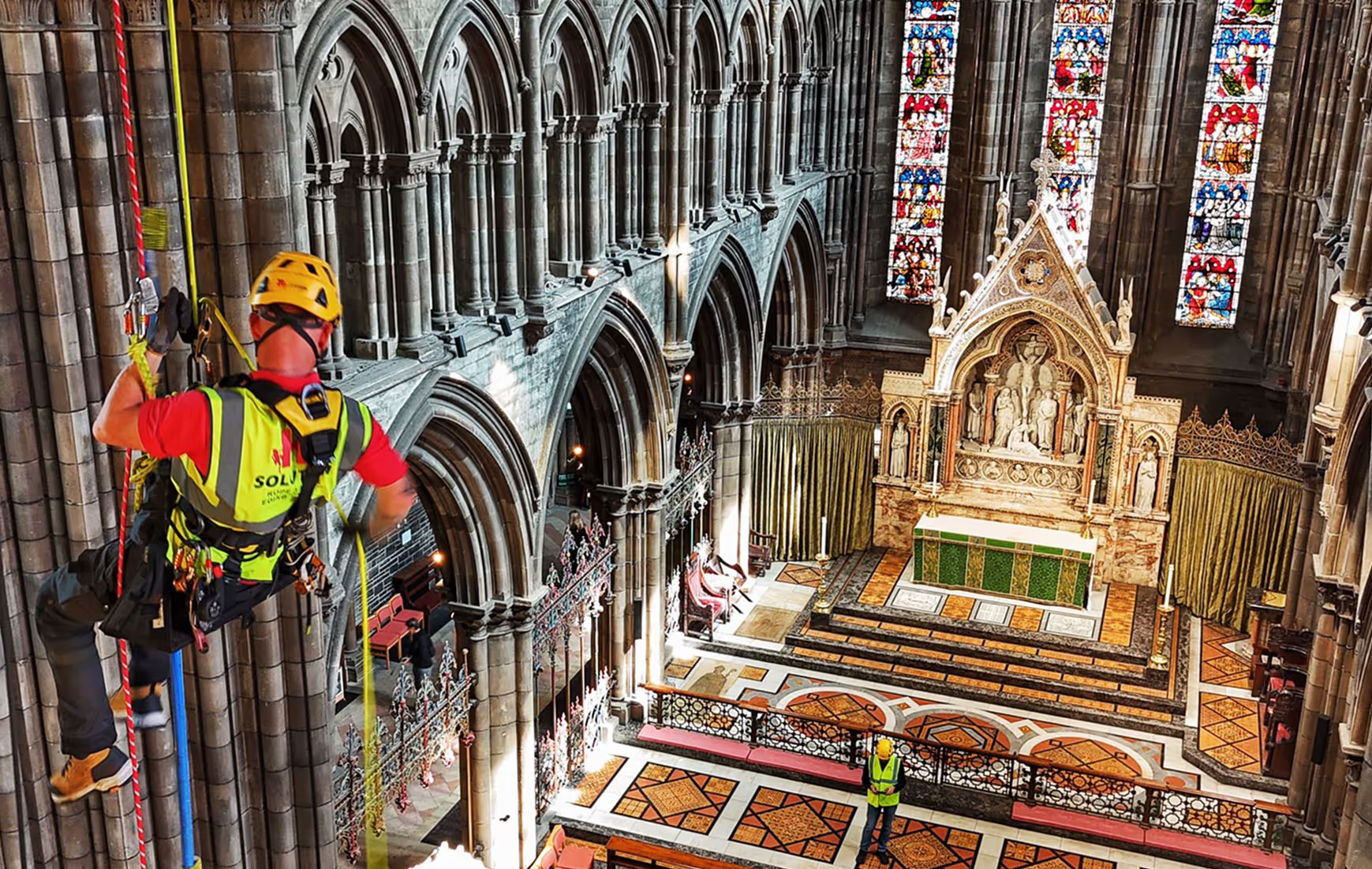

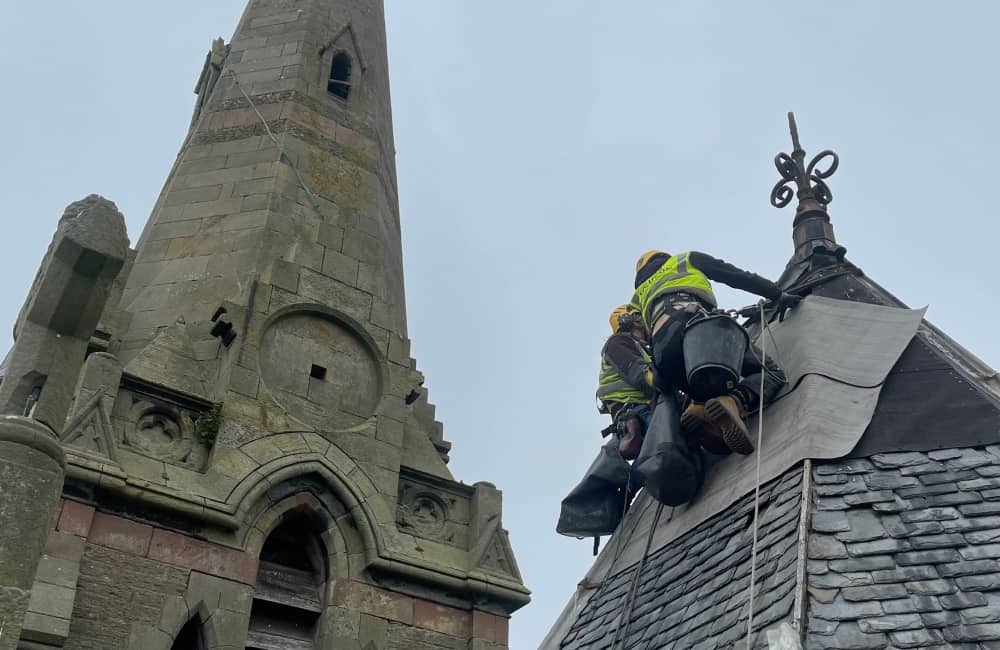
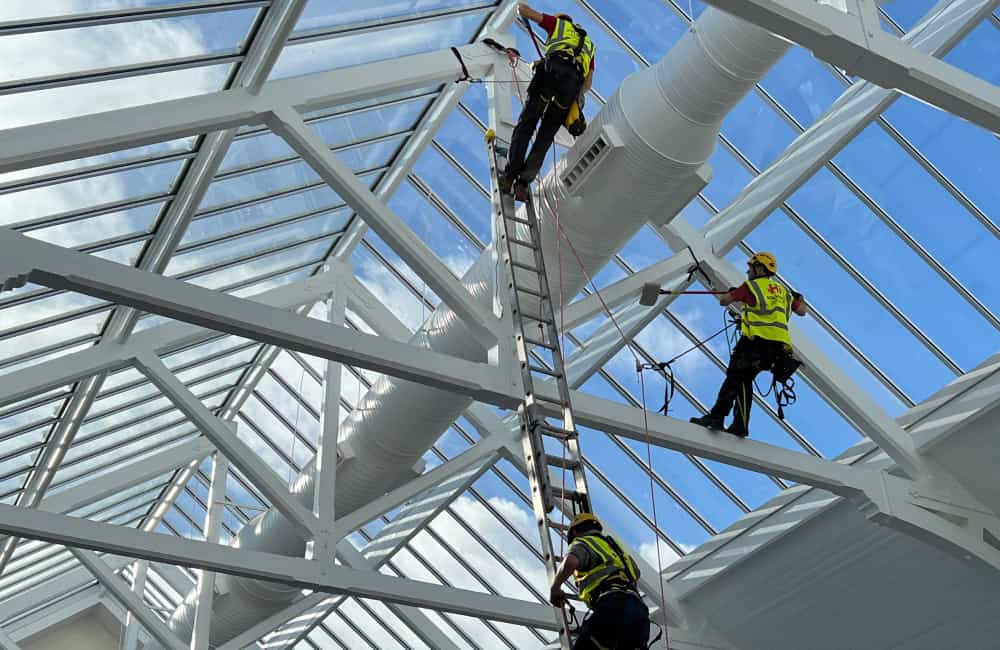
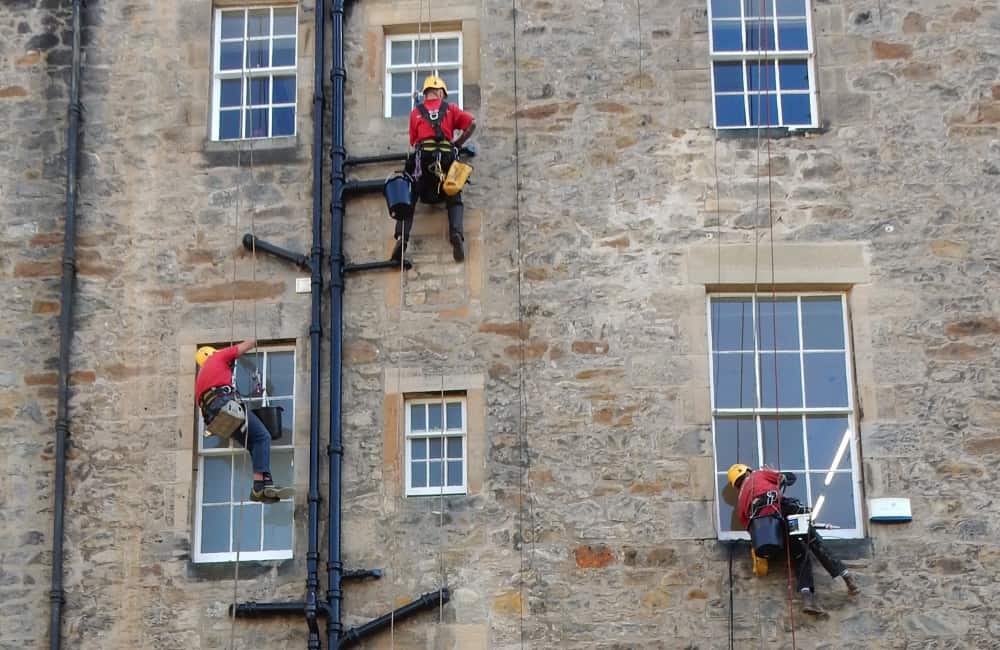
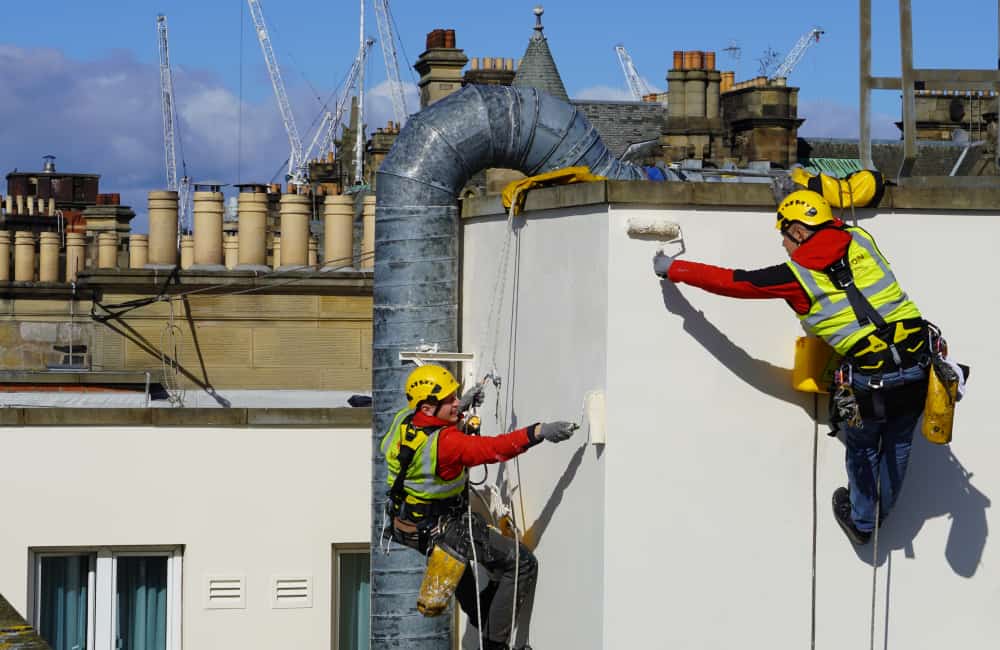

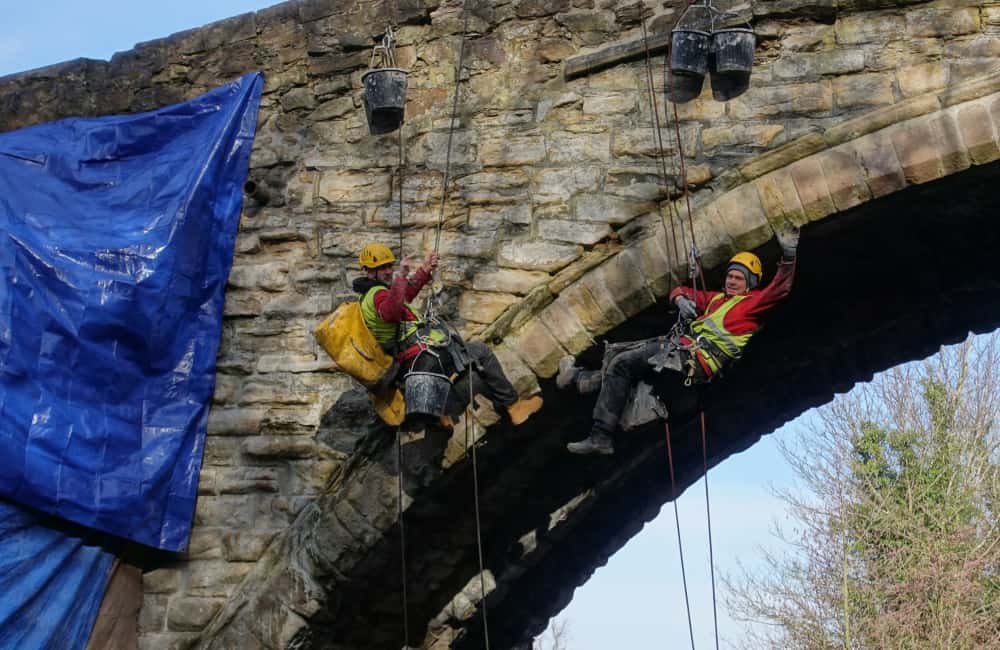

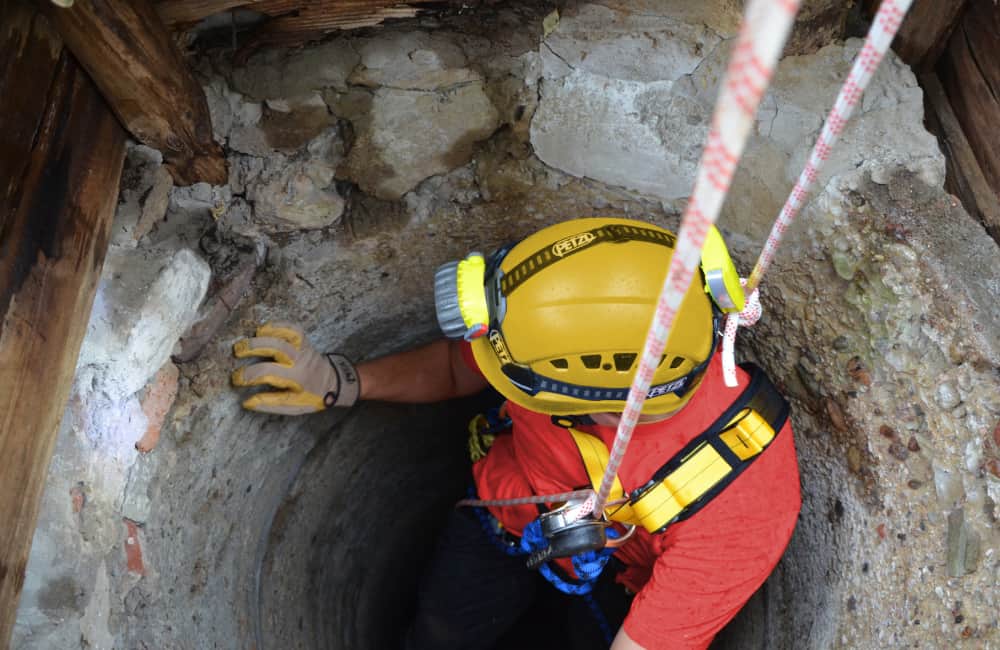
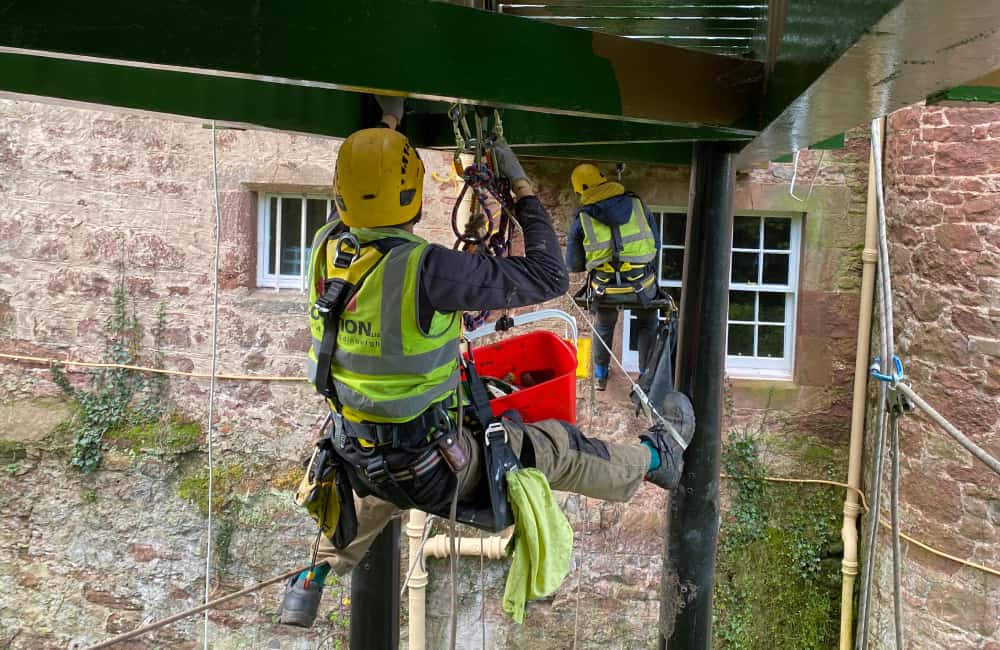
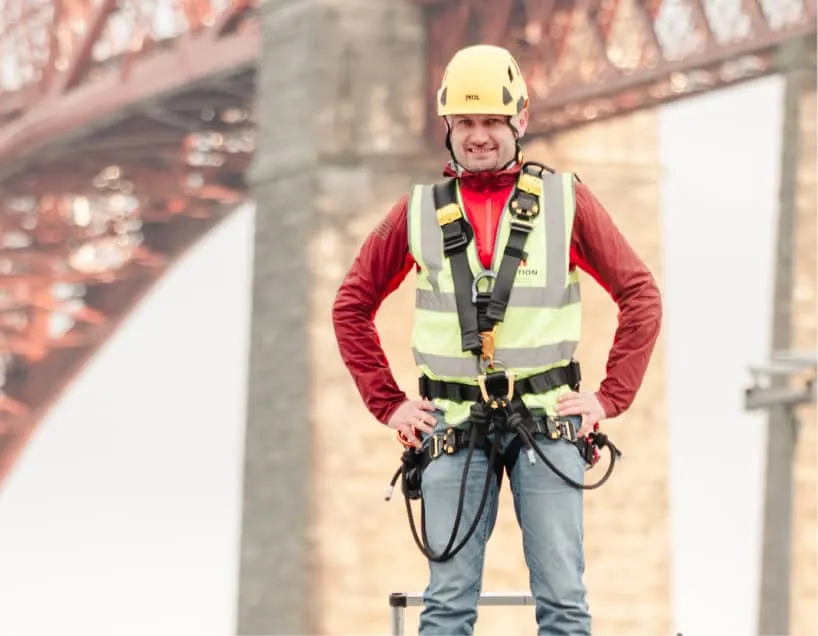


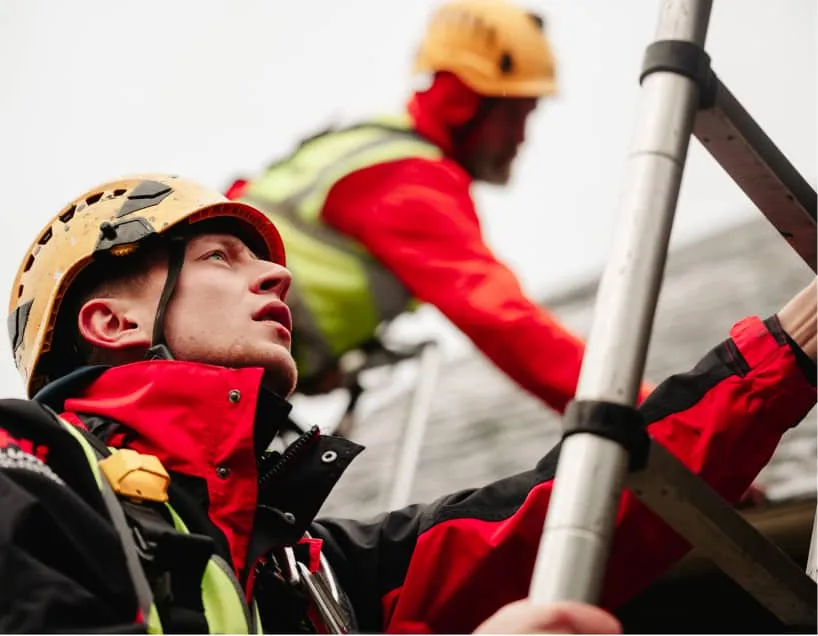


Rope access is a specialised work technique that uses ropes and related equipment to access and work at heights or in difficult-to-reach areas. It is commonly used in industrial settings for tasks such as construction, maintenance, inspection, and repair of structures. Rope access technicians use ropes, harnesses, anchors, and safety devices to descend or ascend vertical surfaces or traverse horizontal distances. Rope access offers flexibility, speed, and cost-effectiveness, as well as safety advantages such as reduced risk of falling and better manoeuvrability in confined spaces.
Yes, rope access is a very safe method of working at height. The use of rope and harness ensures the safety of the operatives at all times, and the safety-focused work systems, equipment procedures and risk assessments combine with professional training to ensure some of the best safety records in construction and other industrial applications.
White there are no legal requirements, IRATA (Industrial Rope Access Trade Association, formed in the UK in the late 1980's) requires training, logged practice hours and challenging assessments in order to obtain rope access qualifications. All our rope access technicians have a Level 1 or Level 2 IRATA qualification and the teams are headed by a Level 3 team leader.
We are the experts. And that is precisely why we have quoted for the optimal access method, for your job, in your specific circumstances. You can find out more about this in the special article on the topic.
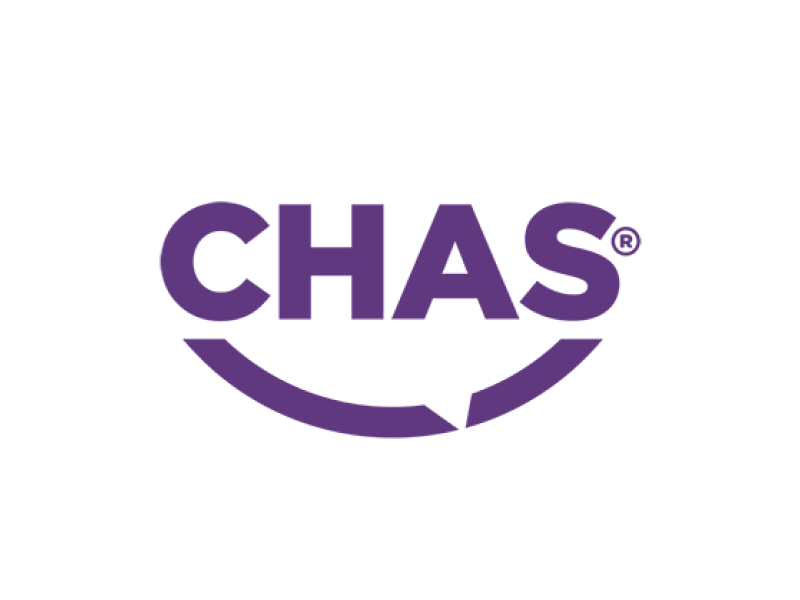
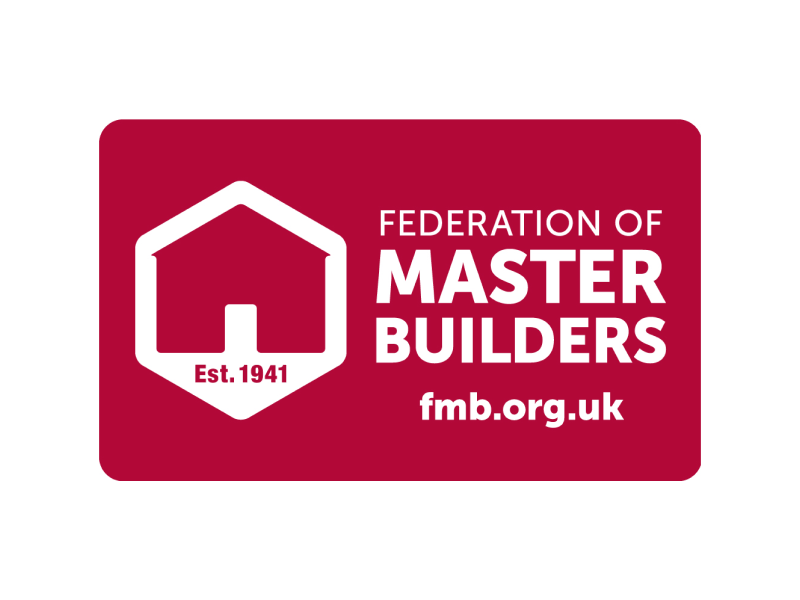

Chimney stacks are one of the most vulnerable elements of any roof, and often cause difficult to tackle water ingress issues.
In addition to preventing persistent and difficult to trace leaks and even structural damage (nobody wants a collapsing chimney!), looking after the chimney render is also important from the safety point of view. Delaminating sections of crumbling render can slide off or even fall to the ground level, damaging property (e.g. cars) at the ground level, and risk injury or even death to pedestrians below.
And of course, a damaged chimney can lead directly to roof damage caused by loose debris, water run-off and trapping. Maintaining the render on the chimneystack in good condition, together with suitable flashing and making sure that the haunchings and chimney pots are in a good state of repair, is a key part of responsible roof maintenance.
“Pointing” means simply replacing or repairing the mortar joints between masonry. While bricks and especially stone are extremely durable, and can last hundreds of years, the material used in the joints between them is more vulnerable to the elements and forces and requires regular maintenance.
Water from rain and snow, changes in temperature (from below-freezing in the winder to heat of the summer, or even higher in the case of some chimneys) and chemical corrosion from polluted atmosphere all contribute to the damage to the mortar.
Regular inspection and repointing can go a long way towards avoiding water ingress, damage to the masonry itself, and structural damage to the building. And it makes the masonry look much better too, preventing moss and other vegetation growth in the gaps at the same time.
In many cases, the chimney is nothing more than a liability. With blocked or removed fireplaces and centrally heated homes, a chimney means simply extra maintenance. Without maintenance, problems with insulation, leaks, and even structural damage or injury can occur.
Full chimney demolition including a chimney breast requires a skilled, professional approach (and building regs sign-off) to avoid potentially disastrous consequences. Removing the above-roof part of the chimney is relatively less risky a procedure, but still a big job that needs to be done well to ensure the resulting roof is structurally sound and watertight.
Natural stone is an extremely durable building material (we have all seen castles and other buildings, some of them well over 1000 years old!) but even this can deteriorate, especially when exposed to harsh weather and modern air pollution. A complete replacement is often not necessary, and repair might be possible using Lithomex, a mortar that has been specially developed for repairing and restoring of stonework.
Lithomex is made from natural hydraulic lime, finely graded aggregates, and pigments. These are all blended to create a special mortar that matches the appearance and texture of the surrounding natural stone as closely as possible. It can be shaped and moulded and is thus suitable for repairing even quite intricate designs as well as simpler defects in stonework and masonry. The results, when repairs are done correctly, are resistant to weather and durable.